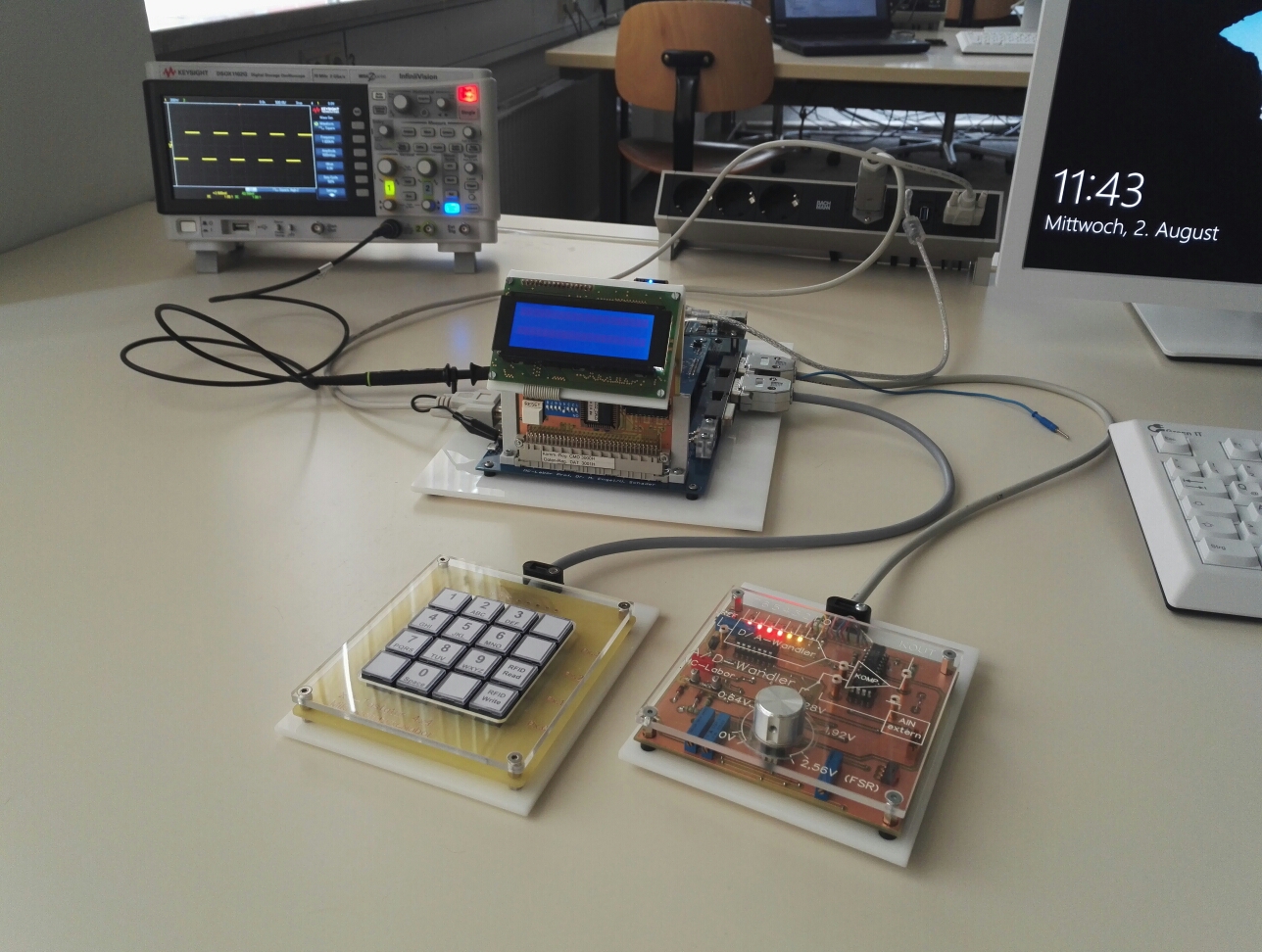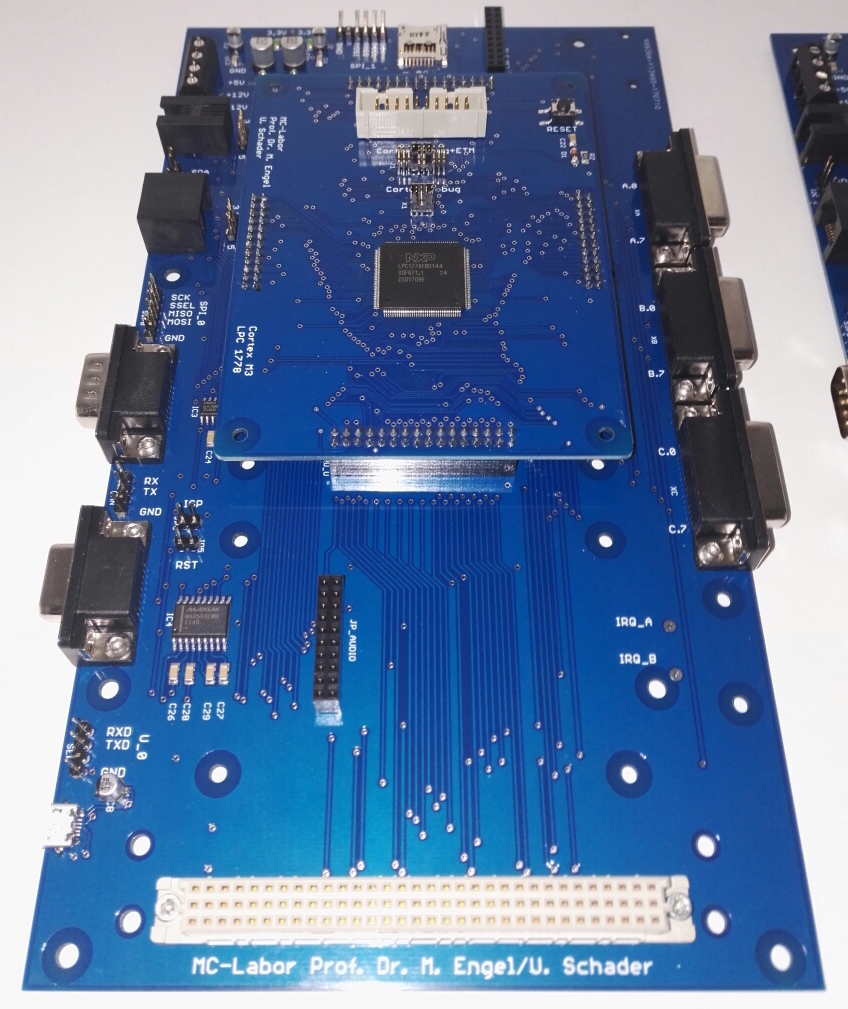The lab is getting in shape!
Here is the example layout for a typical student workplace in our microcomputer and digital signal processing labs. Thanks a lot to our resident laboratory engineer Udo and our student assistant Philipp for all of their hard work!
In addition to a standard PC running Windows 10 with the WSL Linux subsystem, you can see our Cortex M3 development board, some of our standard peripherals for the lab exercises (matrix keyboard, 4x20 memory mapped HD44780 LCD and a DAC/ADC board) and a Keysight DSOX1102G scope. The scope features two 70 MHz analog channels, a signal generator and a large amount of software options, such as serial protocol analysis, Bode plots and FFT.

PCBs for next winter term
These new PCBs, designed in-house, will be used in my courses in the upcoming winter term.
Our boards feature an LPC1778 Cortex-M3 microcontroller as well as a plethora of typical embedded interfaces, such as RS232, SPI, I2C, Ethernet, I2C and, of course, plain old GPIO ports.
The boards will be used in my courses "Microcomputer Technology", a third-semester course mandatory for all bachelor students in electrical engineering and computer science, as well as "Embedded Operating Systems" for fifth- and seventh-semester students. Here, the students are expected to develop their own small preemptive multitasking OS in the accompanying lab sessions.
The microcontroller sits on a separate board, which allows to exchange the chip. We are currently working on a Cortex-M4 (LPC4330) module, which will be used for teaching digital signal processing next summer, as well as an FPGA board, which will allow to replace the microcontroller with a soft core, e.g. a Cortex M0 or M3 from arm's DesignStart program.
We have ordered the boards from EasyEDA, which has again proven to be a reliable manufacturer with excellent quality, low prices and superbly fast turnaround times -- one week from order to delivery!


